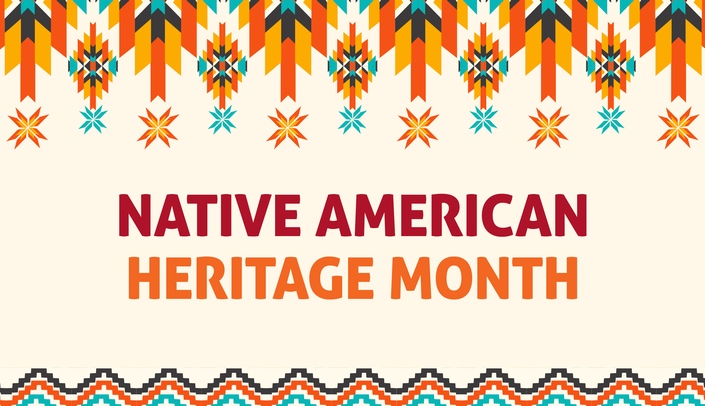November is Native American Month. As Margaret Huettl, PhD, notes here, "The University of Nebraska is a public, land-grant institution with campuses and programs across the state that reside on the past, present and future homelands of the Pawnee, Ponca, Oto-Missouria, Omaha, Dakota, Lakota, Arapaho, Cheyenne and Kaw Peoples, and Winnebago, as well as the relocated Ho-Chunk, Iowa, and Sac and Fox Peoples," who acknowledge Nebraska as important to their tribal histories.
The United States Congress designated a week of October to celebrate Native American Awareness Week in 1976. Yearly legislation was enacted to continue the tradition until August of 1990, when President Bush approved the designation of November as "National American Indian Heritage Month." Similar proclamations, under variants on the name (including "Native American Heritage Month" and "National American Indian and Alaska Native Heritage Month") have been issued each year since 1990.
November is traditionally a time when many Native Americans hold fall harvest and world-renewal ceremonies, powwows, dances and various feasts. The holiday recognizes hundreds of different tribes and approximately 250 languages and celebrates the history, tradition, and values of Native Americans.
This November, our campus will be observing and honoring the vibrant and diverse Native American cultures and the Native Peoples of this land with various presentations and social media campaigns. Participating in campus events such as these provides opportunities to bring more awareness to the First Nation’s people of the United States and their culture.
Historical facts
- It wasn’t until 1924 when all Native Americans were granted citizenship, after Congress enacted the Indian Citizenship Act.
- While most Native Americans were able to vote starting in 1924, many laws at the state-level prevented voting rights for all. It took over 40 years following 1924 for all 50 states to allow Native Americans to vote.
- There are currently 574 different federally recognized Native American tribes (approximately 229 are located in Alaska, and the rest are located in 35 other states). In 2019, there were 324 distinct federally recognized Native American land reservations.
- Native American tribes have what is called tribal sovereignty, which means that they have the right to govern themselves—similar to a state government. Native Peoples, even with their tribal sovereignty, have exactly the same obligations for military service as all other United States citizens.
- 78% of Native Americans live outside of tribal areas.
- There were once more than 300 indigenous languages spoken in the United States, with only 175 remaining. The most popular of these languages is Navajo, with about 170,000 speakers.

